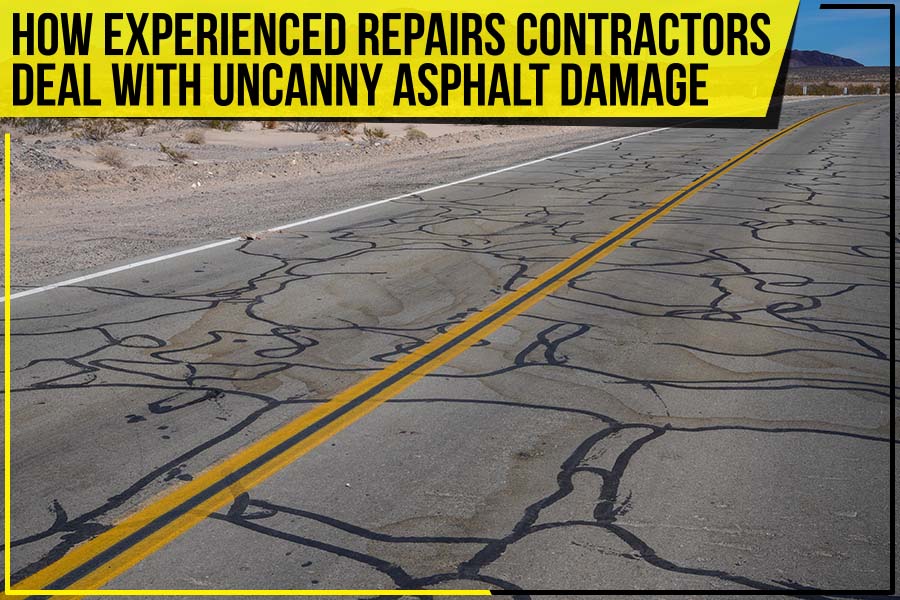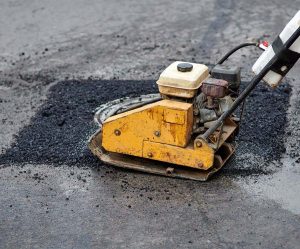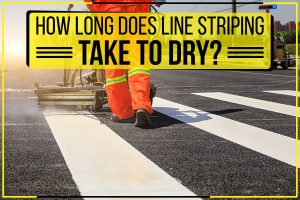Roads can sound really mundane. They’re just rocks and tar on the soil, so what is the deal with asphalt maintenance? You may see a couple of potholes and think your 4×4 can take it, but on a dinghy road at midnight, loss of traction from a flushed pavement may cost you your life.
Asphalt or pavement failure is a serious issue, and each needs to be addressed differently. While you may be familiar with some terms like potholes, birdbaths, and alligator cracks, there are far more hazardous cracks out there in both residential and commercial areas. We’re going to tell you how we, as repair contractors, would deal with these issues.
1. Flushing:
Although considered a benign & irreversible pavement failure, it can escalate to a hazard in cold or rain. Because the asphalt was blended with too fine an aggregate, the asphalt saturates the aggregate like a sponge, and the excess squeezes onto the pavement surface with road usage in warm weather. The asphalt layer becomes a glassy film over the pavement. We apply sand to blot out the excess asphalt, but we mill the top asphalt off or grade it for worse cases.
2. Block Cracks:
They look like harmless block-shaped cracks, but this is another asphalt design failure caused by a poor-quality binder layer that failed to keep up with fluctuating temperatures & elasticity. You will also see such cracks in aged or dried-out asphalt. We recommend a crack sealant to stop water from seeping into the cracks and damaging the subgrade. Worst case scenario, we do asphalt removal and an overlay to get rid of the cracks altogether.
3. Asphalt Slippage:
This occurs when the asphalt binder and the subgrade layers are not sandwiched together correctly by a tack coat, so the layers slip with the passage of vehicles. The pavement starts to look like it lost weight after gastric bypass surgery and now has rolls of flabby ‘skin’. Any part of the road showing this flab requires either a partial or a full-depth asphalt repair. It’s an ugly kind of pavement damage.
4. Reflection Cracking:
When subgrade soils are stable, they are paved by concrete slabs jointed together to give stability, and the asphalt goes on top. Concrete is a rigid base for the flexible asphalt on top, so during temperature fluctuations, the concrete joints deform, and the asphalt above mirrors the cracks at the joints. The next most significant problem is water intrusion. We recommend crack filler for small cracks, compression seals for wide cracks, but deep cracks need an overlay of concrete and asphalt.
5. Asphalt Corrugation:
The strangest one yet; this happens because of several coinciding events. Fine aggregate blend, soft asphalt, and horizontal shear stress are typical at intersections. The pavement ends up looking like a corrugated steel sheet. We recommend a full-depth asphalt repair since the damage is absolute.
Believe us when we say we have seen it all; that’s why Standard Striping has expert-tailored solutions for all things pavement. We’ve been active since the late 90s in Maryland, and if you require our services in Severna Park in Anne Arundel County, then you know who to call!
We are obligated to provide free estimates on all our services, so don’t miss out on hiring us. Apart from our superb work ethic, we do have many and odd-pavement stories to share with you all!




